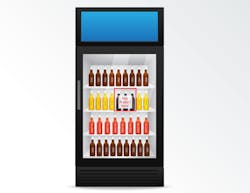The merchandising opportunities in micro markets far exceed those in vending. And due to its retail nature, operators are starting to utilize a well-established retail practice – slotting fees. A slotting fee, according to a Federal Trade Commission survey, is used to help defray the costs (including risk) associated with launching a new product in retail. Usually paid by the product supplier or manufacturer. This has both pros and cons when it comes to the future of the micro market segment.
The upside to slotting fees
Slotting fees certainly assist in mitigating risk. Generally part of a larger retail marketing agreement, it helps lower the retailer’s per unit purchase costs for an initial period of time. The rationale behind slotting fees is to cover the costs incurred when an operator needs to assign warehouse space, modify the planogram, set up the new product in the retailer’s computer and accounting systems, put new product on and remove old product from warehouse and store shelves, as well as mark down old product to sell it off.
How much risk is really involved with launching a new product? Well, one prominent researcher, Inez Blackburn from UC Toronto, says the failure rates of a new products launch are close to 70 percent, leaving only 30 percent successful. An article in Food Processing Market View: New Product Success Rate Higher Than Most Believe, actually claims the opposite, that food manufacturers are doing a better job than ever before of launching food and argues 66 percent of launches are actually successful.
The specific percentage aside, new products drive same location sales. They keep a retail space fresh and exciting, drawing customers in to see what’s new. Sales increase and new customers are made.
It might not even be a new product, but just a product previously unavailable in vending. Slotting fees can help operators overcome hesitate to place products that sold slowly in vending or were unable to be dispensed via a spiral or beverage machine. It guarantees to the operator a certain monetary return on the product investment.
Agreements vs. data
Slotting fees have many advantages for micro market operators. However, by their very nature, they are driven by the manufacturer or supplier, not the consumer.
“Selecting and merchandising SKUs per the [retail marketing] agreement could put a less than ‘best’ product mix on the shelf,” warned Paul Schlossberg, vending consultant. Operators who opt to use slotting fee arrangements instead of targeting a micro market’s planogram to the tastes of a specific location could see lower sales and profits compared to what should have been achieved, continued Schlossberg.
Schlossberg suggests that analyzing the data from micro market purchases to determine the best product mix for the location is important. Without proper attention, the operator could be putting the wrong products on the shelf and the SKU assortment will be weak, resulting in weak sales and poor customer experience.
The best option for micro market operators appears to be using a combination of both processes. It will allow operators to stock products that the consumer at that location wants to buy and also get reimbursed for the risk of adding a new product that might not sell well and needs to be added to the warehouse, computer system, etc.
About the Author

Emily Refermat
Emily Refermat began covering the vending industry in 2006 and served as editor of Automatic Merchandiser from 2012 to 2019. To reach the current editor of Automatic Merchandiser and VendingMarketWatch.com, email [email protected].
